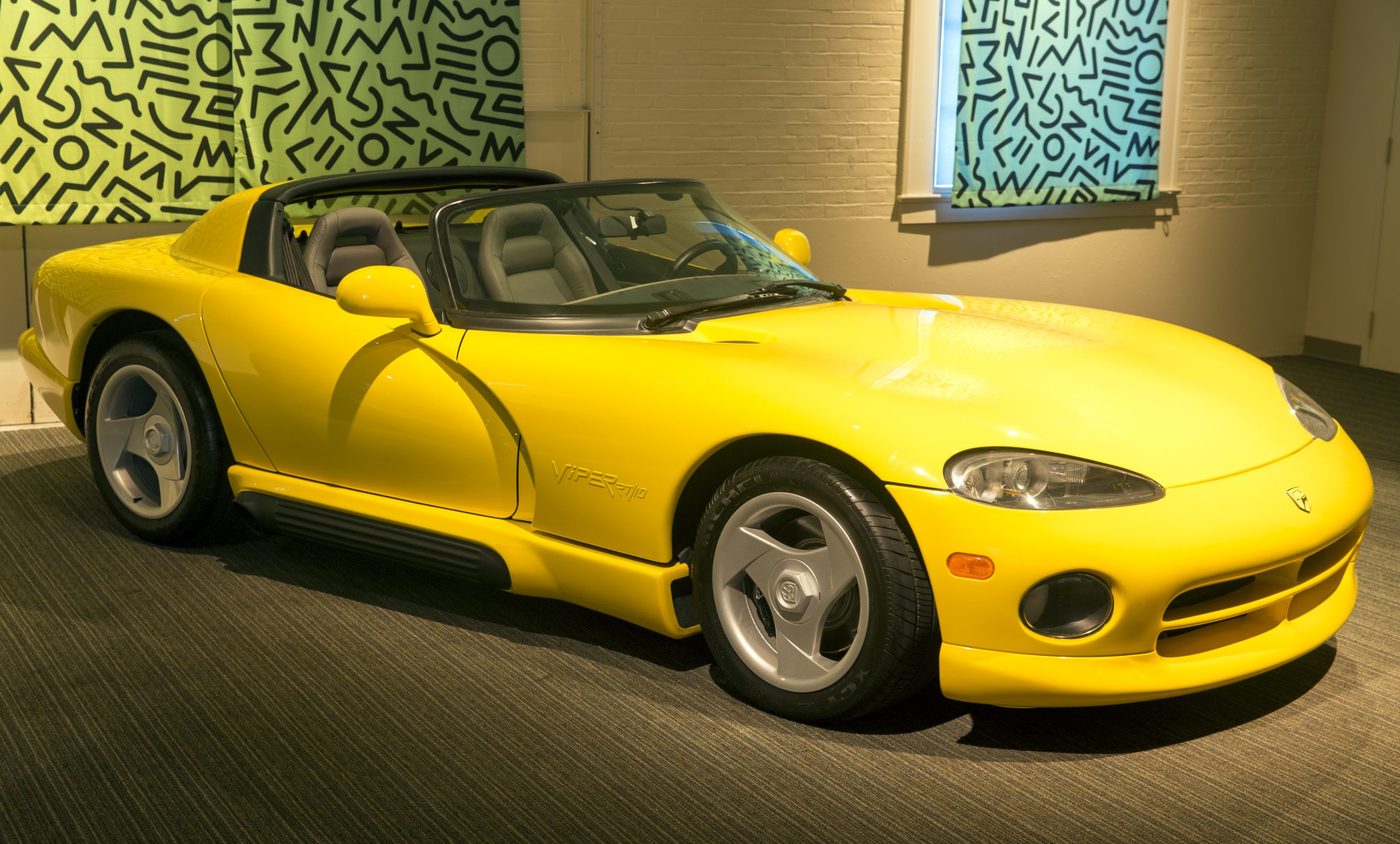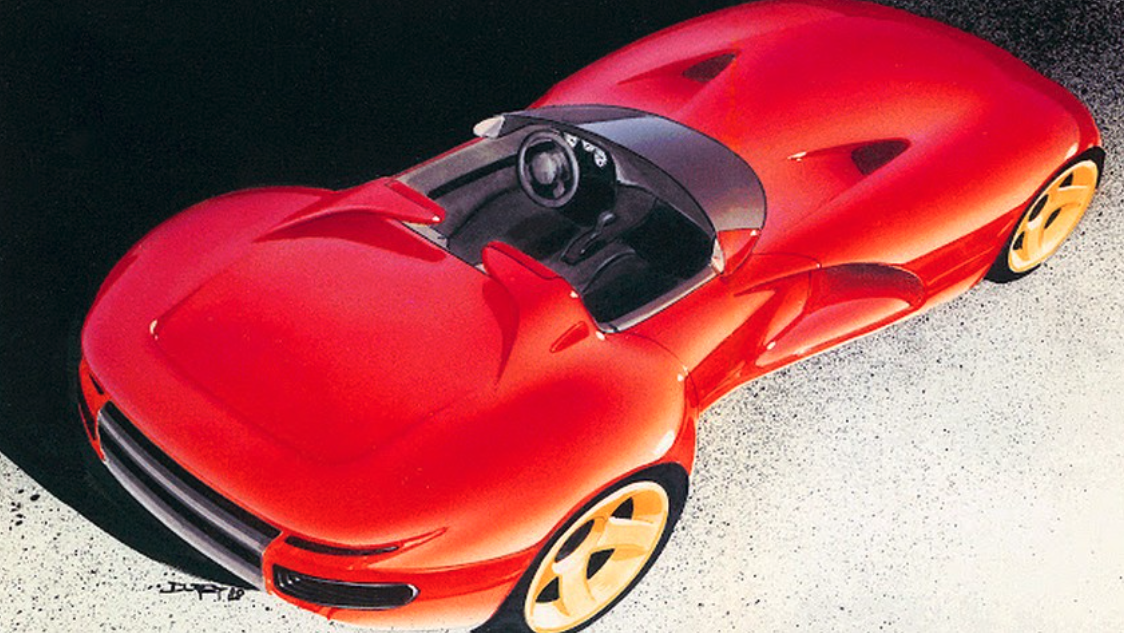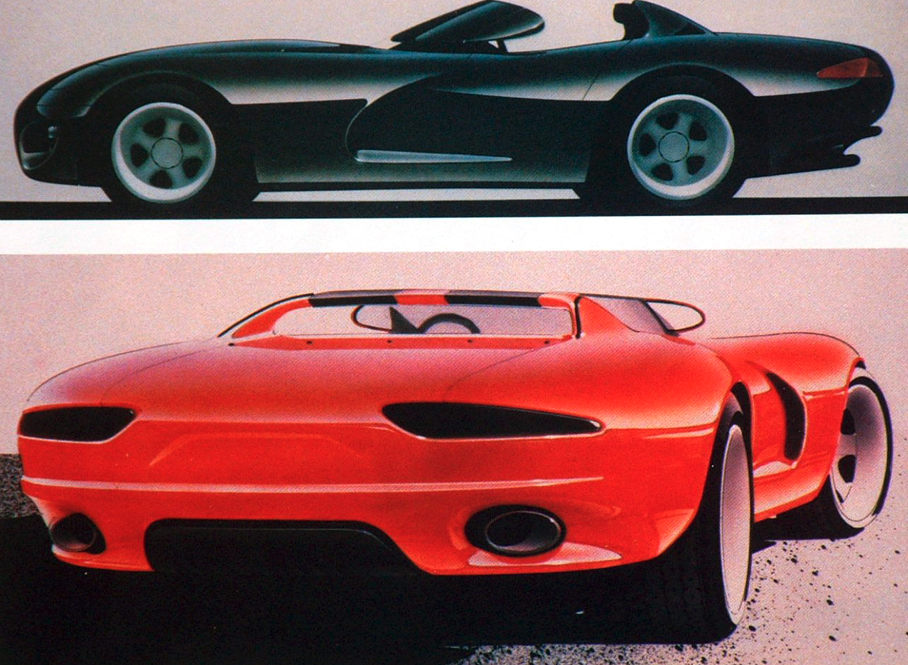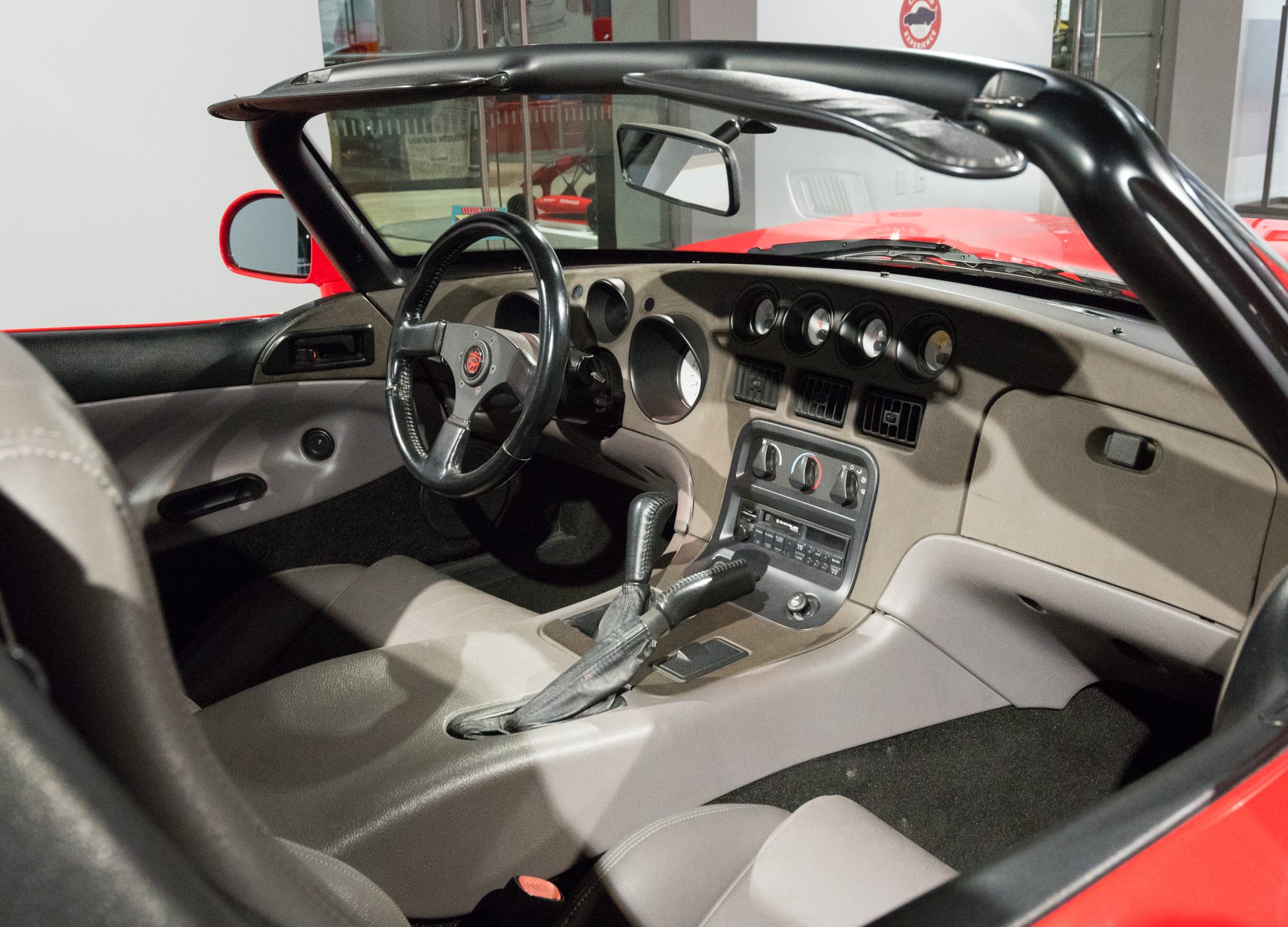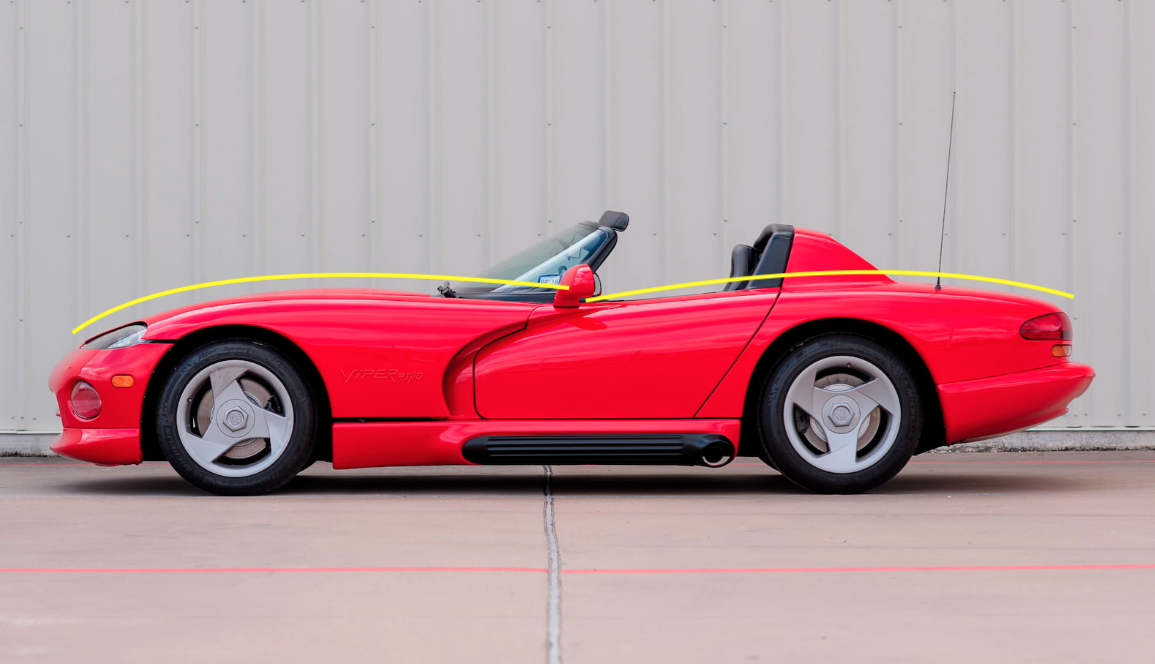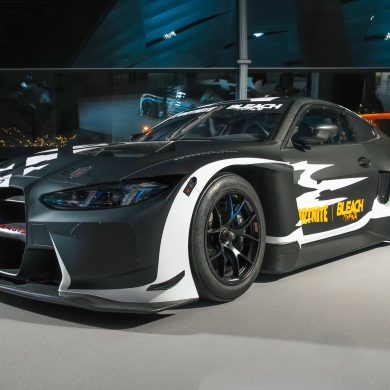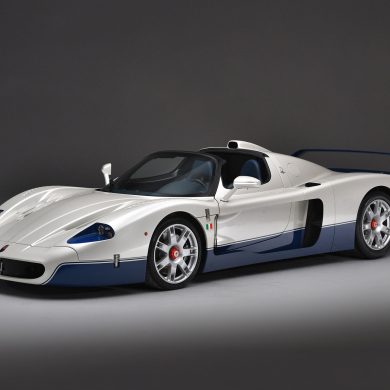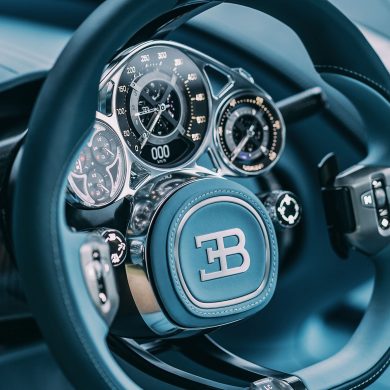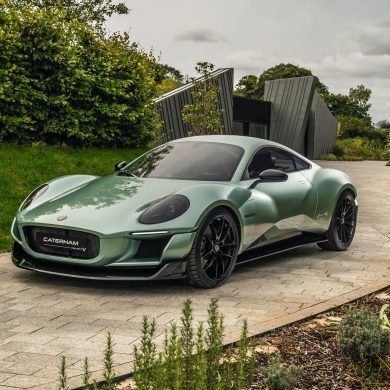After suffering what must be called the worst five years of American car design 1974-1979, the 1980s ushered in the beginning of a new generation of performance cars. Chevrolet showed up first with the ground-breaking Corvette in 1984, followed by a series of performance cars leading up to the Buick GNX, the IROC Camaro, Mustang SVO, and several other cars that launched a second muscle car revolution. A revolution, that has arguably continued into the 21st century.
Chrysler, having recovered from near financial collapse was a bit late to the game, but had a powerful ace up their sleeve. The car would be penned as a pure performance front-engine sports car that would compete with any of the world’s top super cars. Spearheaded by car enthusiasts Bob Lutz and Tom Gale, the vision for a striking design that would recall the heyday of powerful front-engine sports cars like the Cobra, Cheetah, and Tiger was soon assigned a platform for engineering and development. The biggest challenge for Dodge was not the power or the performance, the Viper asked a very important question to true enthusiasts, “Is there still a market for a spartan performance car with a bad attitude?” Turns out, the answer was yes.
Penned by a young designer just a few years out of Art Center College of Design, Craig Durfey (Chrysler 1986-1988) developed the main themes for the exterior design with the first prototype completed for testing in January 1989. Durfey called upon vintage design themes but created a fresh and visually dynamic design that captured brutish power and purposeful grace. Under the ownership of Chrysler, Lamborghini was leveraged to work on the V10 engine while themes for minimal amenities and sparse interiors of the earliest production models were offered without air conditioning, a basic canvas roof, and no exterior door handles. A roadster for the street but with a powerful performance presence, the 1992 production Viper delivered a unique design to an enthusiastic public eager for something to compete against the aging C4 Corvette.
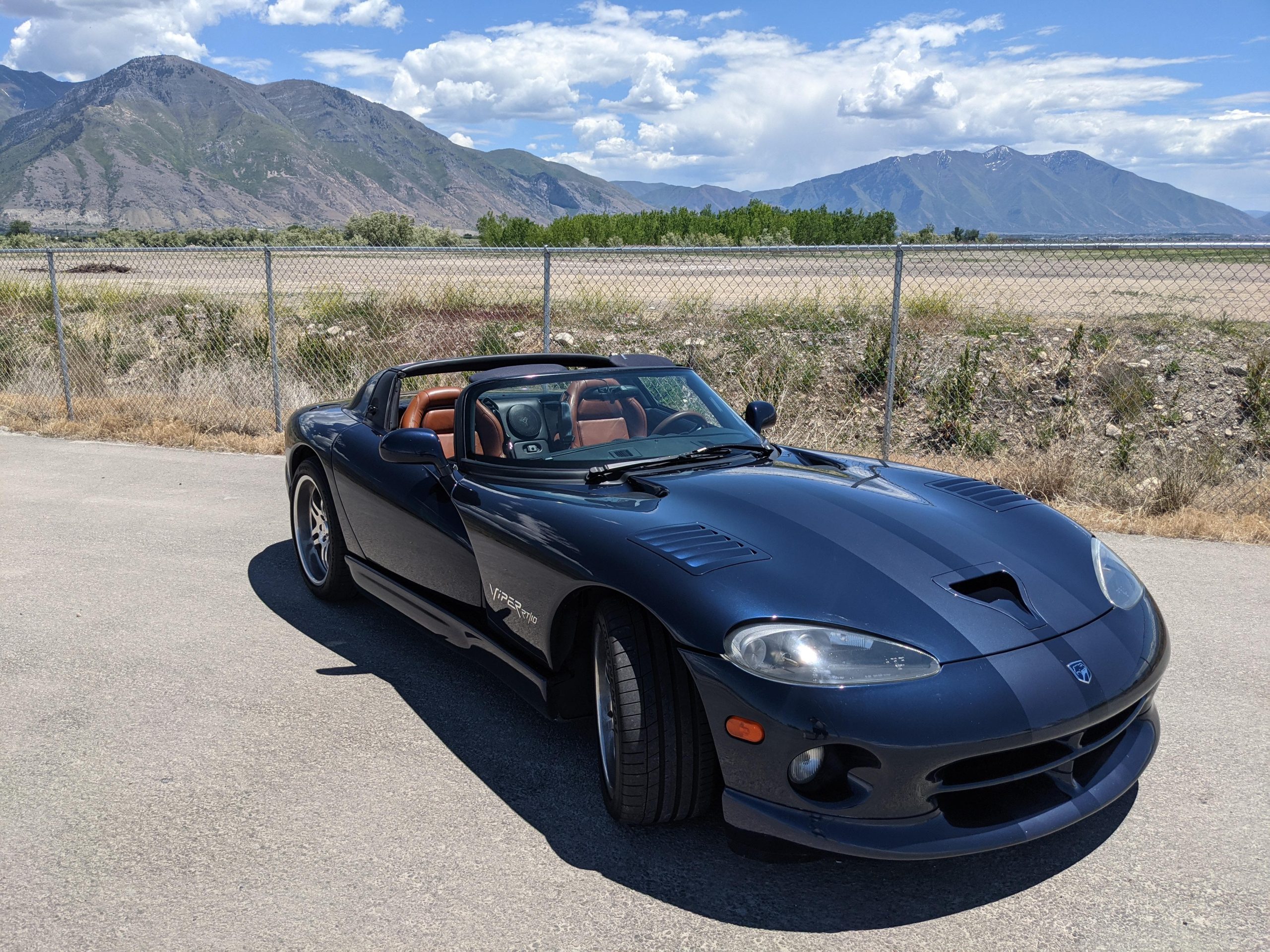
Over the years, the Viper has evolved, but the first-generation Viper is the design that started it all. With a whopping 400hp engine (a significant figure in 1992), no luxury amenities, no side glass, no ABS, no driver’s airbag, and a manual 6-speed transmission, the package was basic, demanding to drive, and hard to keep under control. Offered only as a roadster in the inaugural year, the open configuration featured a rear roll hoop design element but lacked the structural components to house an integrated roll bar. Weighing in at under 3,500 lbs. and capable of 0-60 in 4.5 seconds, the Viper covered the quarter mile in under 12 seconds. If all this sounds a bit familiar, well it should. The 427 Shelby Cobra was essentially the same package – big engine, light weight, lots of torque, and eye-watering performance.
One of the most unusual features of the Viper is the massive front air vent that defines the forward tilting clamshell hood. A signature feature of the original Durfey rendering for the final design, this feature divides the car in side view and sets up a tension point at the base of the cowl. This feature boldly defines the front engine while drawing the eye upward and quickly back to the powerful rear haunches. The result is rapid visual acceleration that gives the appearance of speed even while standing still. The doors also dive inward to the cowl, putting visual tension at the apex of the driver and engine, as though the cockpit is being sucked into the engine compartment.
The overall Viper shape, while organic and rotund, hides a great deal of muscularity in the haunches. It’s important to remember that during the early 1990s, organic car design had only begun to appear in production car designs. Most vehicle designs were still relying on a combination of organic and linear design elements to gradually transition into more dramatic organic shapes. The Viper, however, jumped fully in from day one. Durfey and the Dodge design team carefully integrated design elements on the Viper, leveraging elliptical shapes, soft curves, and ovoid details. Even the headlights and taillight signatures were softened to complete the organic theme. And while the overall Viper platform was not a new concept, the execution was novel and refreshed in a way that no other manufacturer had done or has done since. V10 engine, side exhaust pipes, round outboard flanking driving lights, powerful stance, massive wheels, and peak performance as the absolute goal of every component. America has had performance cars in the past, but other than the Corvette (arguably a more refined car with amenities and comfort priorities), no other American sports car has captured the imagination and performance purity for as long as the Viper.
After more than 30 years and over 31,000 cars produced, the Viper has cemented itself as a performance icon with ongoing improvements and multiple iterations throughout the five generations of series production. Concluding in 2017, primarily due to the aging platform no longer compliant with modern safety regulations, hyper tuners have further generated the vaulted status of these capable cars with stock body, street legal examples exceeding 200 mph. Sources close to Dodge development teams hint at the possibility of a new Viper which might include sophisticated drivetrain packaging and future long-term platform engineering. It certainly would be a welcome addition to the otherwise bland offerings we see more of today. Perhaps there is enough interest remaining to sustain yet another snake to charm the future.


